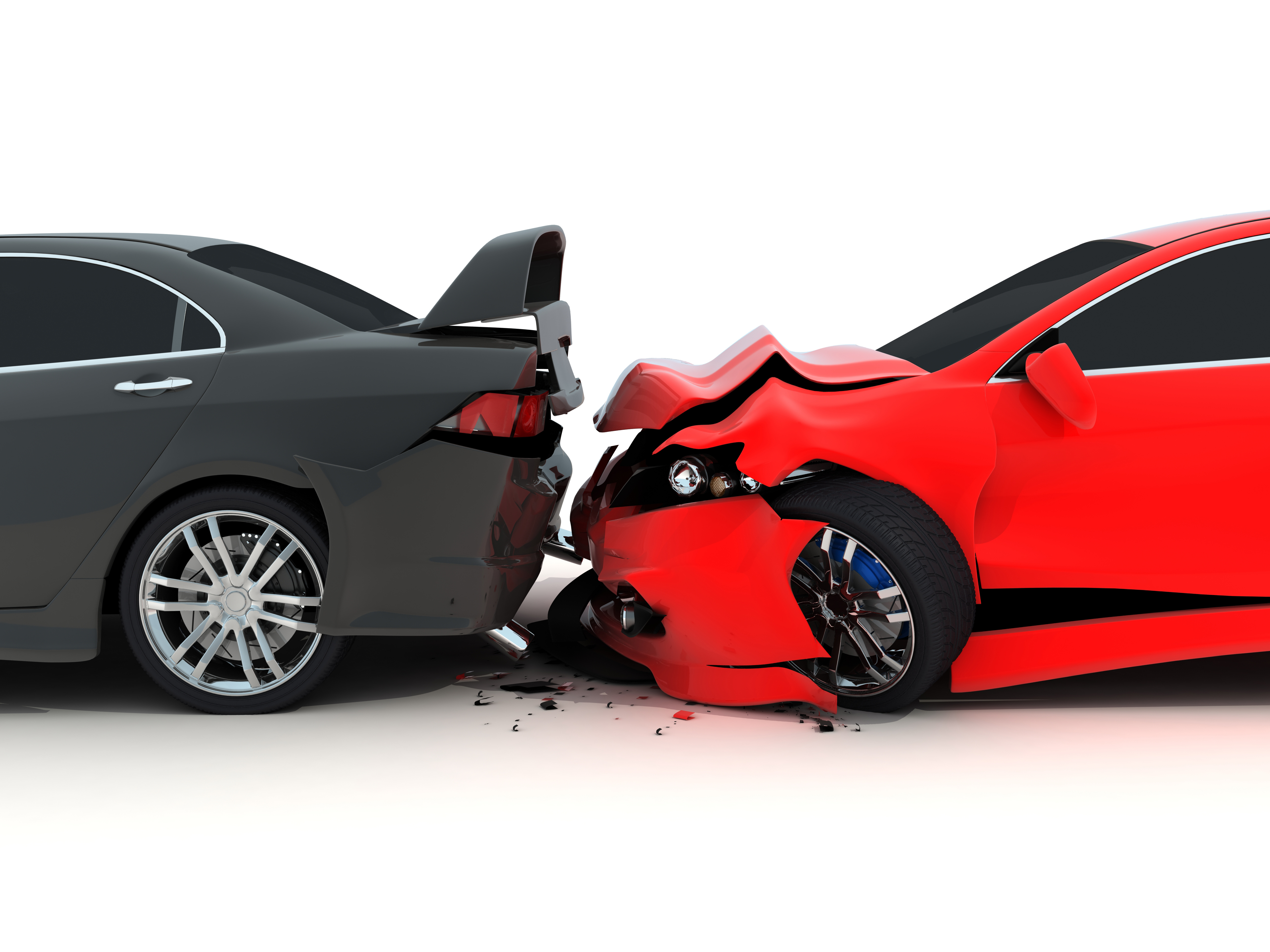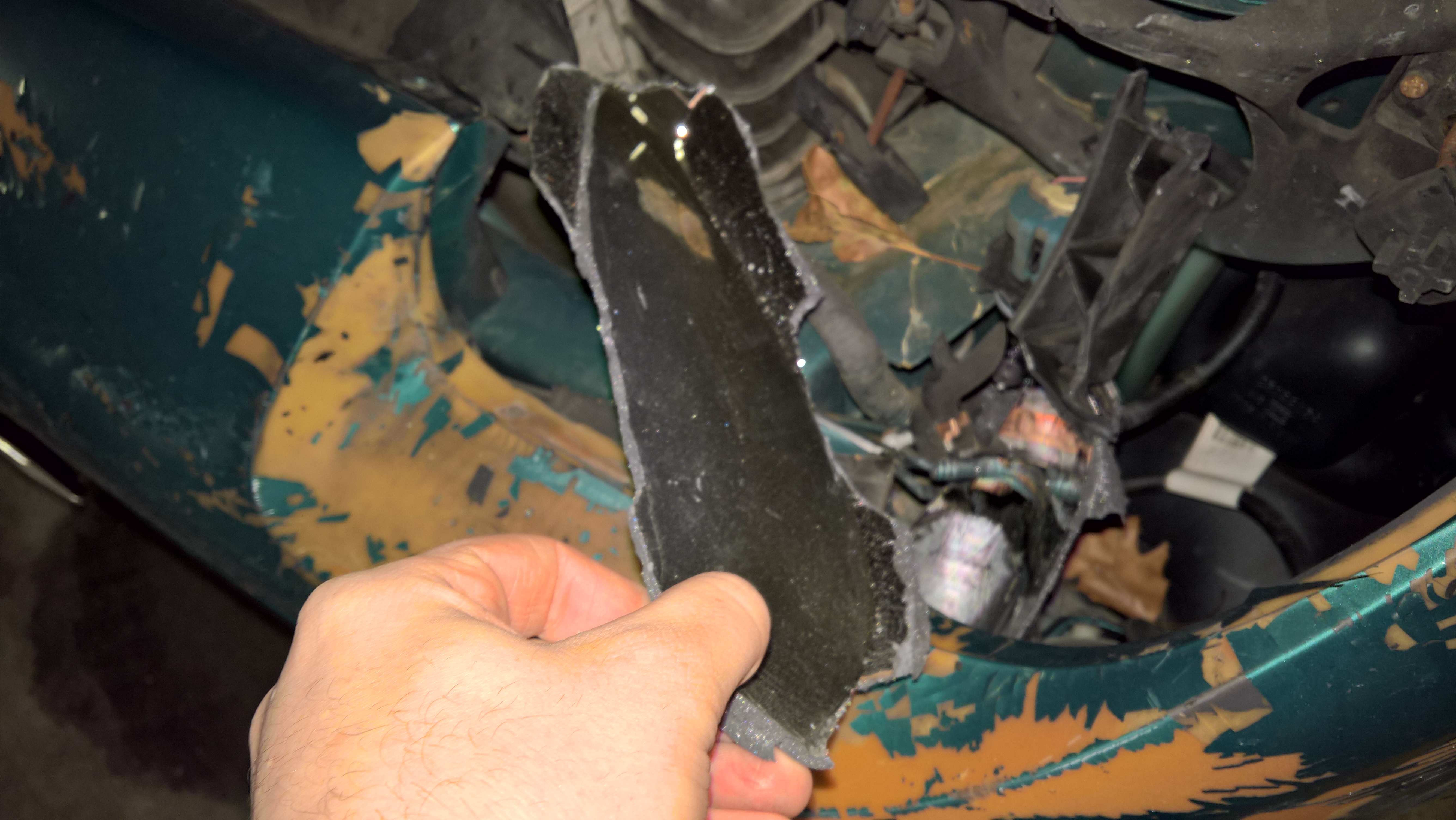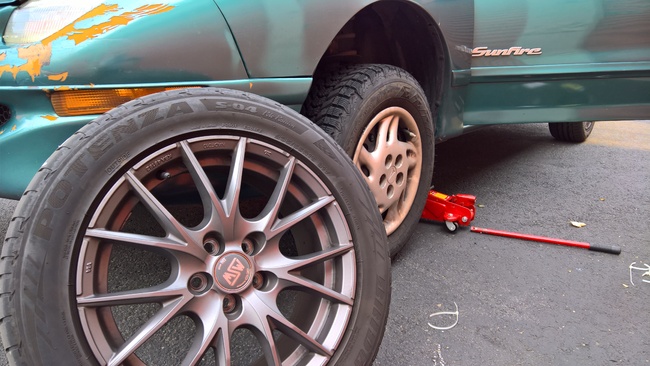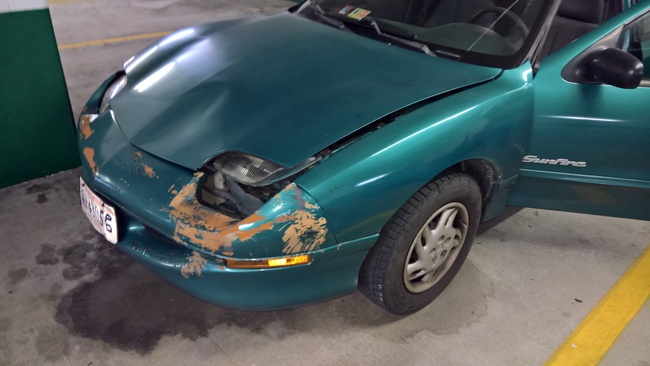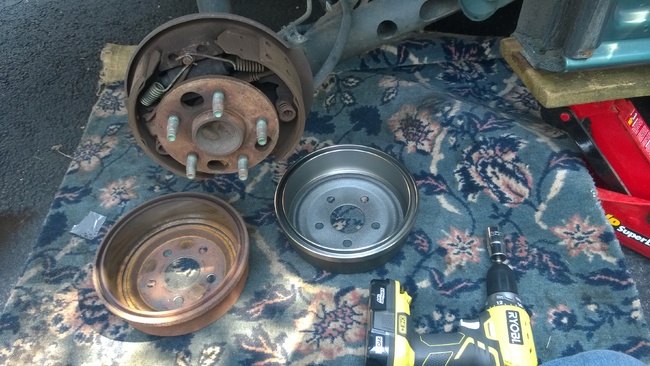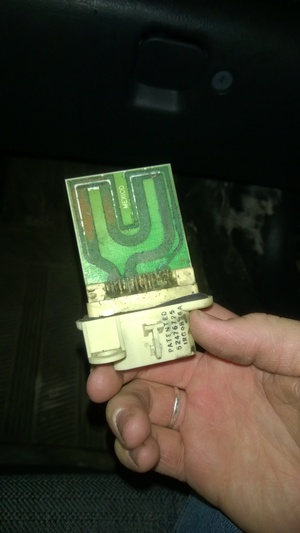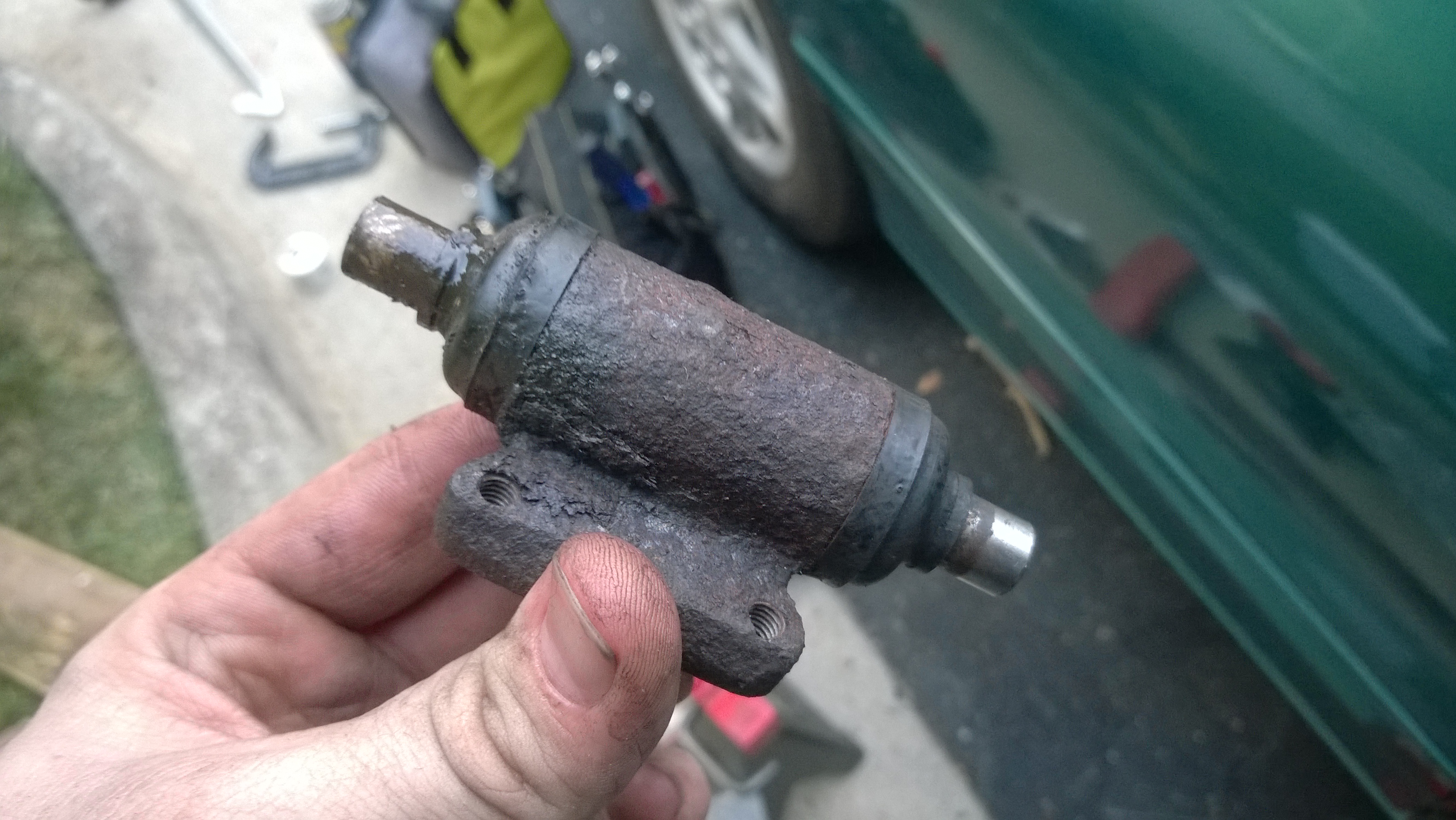#SaveEddie, Part IV: The Agony of Without
 Tuesday, September 5, 2017 at 2:36PM
Tuesday, September 5, 2017 at 2:36PM This is the fourth part in a series of articles chronicling my illogical attempts to repair and restore my long-time owned Pontiac Sunfire, affectionately dubbed "Eddie." Do not anticipate expert repair advice. Trust me, an actual mechanic would have sorted this all out years ago.
Previous Entries:
Part I: The Coefficient of Friction
Part II: The Consequence of Inertia
Part III: The Inconvenience of Arithmetic
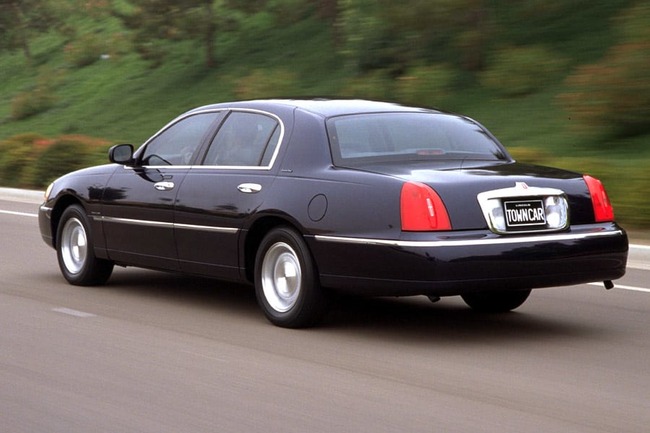
I have mixed feelings about Uber.
This does not regard their recent PR fiascos involving rampant chauvinism among senior management. It’s not about their investment in autonomous vehicle technology, which certainly isn’t in the best interests of its 400,000+ drivers’ long-term employment opportunities. I’m not even talking about the (until recently) utter absence of an in-app tipping system for drivers which, as a bartender, really should bother me.
My mixed feelings are about ride-share services in general, and Uber is just a good one to put in the first line of your post to grab readers’ attention.
On the one hand, it’s a great option for my nights out when I know I’ll partake in numerous libations. Definitely done that before, which my old roommate can attest. But as a commuting utility, it’s hard to justify the daily expense. I find travel time can end up being extended, since the driver may not know your shortcuts. I also find myself uncomfortable when in someone else’s car, as well as anxious, since I’m not the one driving.
Plus, most people who drive for Uber have rather dull cars. My heart sinks a bit when the app tells me Abdul will be here in 7 minutes, driving a Toyota Camry. But let’s be honest: nobody in an Audi A8 is gonna feel the need to drive for Uber to make some extra cash. In light of this, I have thoughts of winning the lottery, buying a Maserati Quattroporte and enlisting in Uber for fun.
The best Uber I rode in was also the last one before the insurance adjuster came the next day to drop the total-loss bombshell on my psyche. My driver picked me up from work driving a Lincoln Town Car, one of the last such examples of Ford’s Panther Body. A former hire car picked up at auction by my driver, this boat took only five of the thirty minutes I spent in it to convince me why it is what every cab and limo company used since their introduction.
The rear seat had the kind of legroom you get in the front seat when you’ve slid it all the way back. That’s impressive to someone of a 6’4” stature like myself. And the seat had some give at the edge, which eased entry and exit. The designers of my dad’s Honda Fit must have been aiming for seat support, so it’s stiff at the front, restricting already-limited movement when sliding to the middle seat. Not that I ever really sit in the middle-rear seat in any car since my final growth spurt somewhere back in high school; people now just look up at me and say, “Yeah, you should probably sit up front.”
Perhaps that’s my message to Uber: When you go to a fully-autonomous fleet (which you will eventually, let’s be honest), it’ll be in your best interest to equip a fleet of Lincoln Town Cars. This nearly-40 year-old platform nailed it for rear passenger comfort before your founders were allowed to use a pack of crayons with more than eight colors. At least I think so; I’ve never been in a 1979 Ford LTD, so improvements may have been made since then.
These are the thoughts that occupy my time as Eddie sits in my apartment complex’s garage, preserving his state until the insurance adjuster can take a look. Once he does and gives his verdict, I take the Sunfire down to my parent’s house, where the work can be done. Because my lease forbids auto repairs on the premises. On the one hand, I get it; they don’t want the place looking like a salvage yard with transmissions and orphaned bumpers littering the property. On the other hand, I had to be sneaky when Eddie snapped a brake hose in the garage before I’d set off for a movie date.
With Eddie squared away at la maison de ma famille, my dad can take a closer look at the damage. I defer to him because, despite my extensive YouTube tutorial viewing, he has far more experience with these things than I do. No matter how much you think you know, there’s always someone who knows better, and it’s usually Dad.
Dad’s eye sees it’s not too bad, frame bending aside. But that’s for another post. Until then, insurance has sprung for a rental, so we head to Enterprise, who must have seen that insurance is footing the bill and said, “Oh, you’re getting this car.”
The guy at the desk said, “Is a Cherokee okay?” and I’m thinking the Dart-based crossover, so I said, “Yeah, sure.” It hadn’t occurred to me he might have appended the “Grand” prefix to that model. With this behemoth, the insurance-backed rental budget will be depleted in about a week. Well, played, sir.
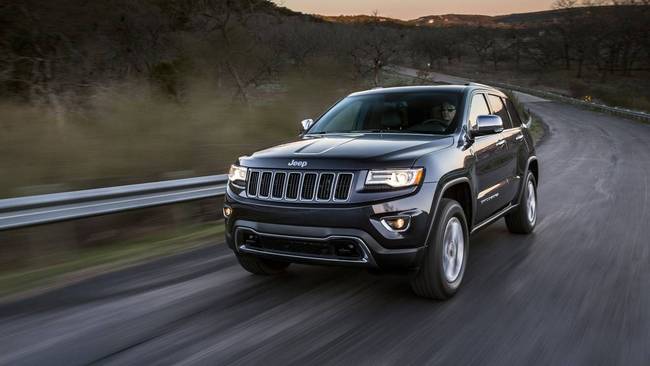
But that Jeep is nice. Like, ole-timey gangster-nice. Every fiber of my being is screaming, “Don’t get used to it, don’t get used to it…” But it’s so nice…
Objectively, the interior is well-constructed, electronic amenities are plentiful, and it has an opulence-inspiring sunroof. Subjectively, driving dynamics aren’t as direct as my Sunfire, especially with the eight-speed gearbox and high center of gravity. But it’s still so very nice…
Bear in mind, however, that my list of luxury features still includes “power windows.”
It’s also overkill for one guy commuting. So, I look forward to getting Eddie back to driving condition. Until then, I comfort myself in the knowledge that I can park just about anything as big as that Jeep.
As a side note, does anyone else find rear-view backup cameras disorienting? I found myself just turning my head around to park using my own depth perception every time.
 Eddie,
Eddie,  Grand Cherokee,
Grand Cherokee,  Jeep,
Jeep,  Lincoln,
Lincoln,  Pontiac,
Pontiac,  SaveEddie,
SaveEddie,  Sunfire,
Sunfire,  Town Car,
Town Car,  auto repair,
auto repair,  insurance,
insurance,  rental car | in
rental car | in  LeadFoot
LeadFoot 

